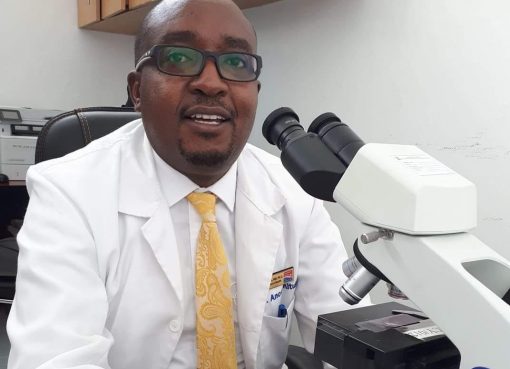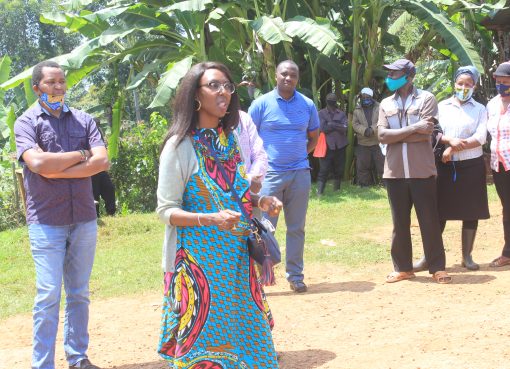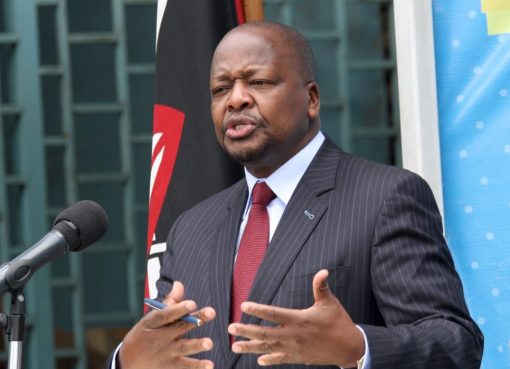County Agriculture, Livestock, and Fisheries Executive Committee Member (CECM), Leonard Bor, said the notion that mechanisation was only for those in large-scale farming was misguided and the belief was increasingly becoming a threat to Kenya’s food security.
The CECM said the County was partnering with the American firm- Hello Tractor and Mauka Cooperative Society to facilitate mechanisation of small-scale farmers in a move aimed at enhancing productivity and profitability of the small farms.
Bor said the devolved unit, in partnership with Hello Tractor, had set up a mechanisation hub at Mauka Cooperative Society in Mauche Ward within Njoro Sub, which was also linking providers of mechanised farm services with smallholder farmers who do not have agricultural machinery.
While acknowledging that technological advancements and innovations could help small-scale farmers improve productivity, Bor explained that the initiative was aimed at giving younger farmers opportunities to embrace better mechanised food production strategies to help increase yields and quality of the farm produce.
“We want the smallholder farmers to access subsidised mechanisation to help reduce their overreliance on human labour, which is not economical,” added the CECM.
He noted that technological advancements had enabled the manufacture of lighter and cheaper machines that could help smallholder farmers revolutionize agriculture both in terms of quantity and quality of products grown and processed.
While noting that the need to boost crop yields to feed Kenyans was becoming a priority where technological advancements and innovations were crucial, Bor emphasized the need for the farmers to adopt mechanisation, saying that mechanised farming contributed to timely preparation of land, efficient land use, and increased production.
The CECM said there was a need for traders and dealers in agricultural machinery to equip smallholder farmers with technical know-how to operate and maintain the machinery through field days, workshops, farm visits, and seminars to enable them to become commercially successful.
Bor said the County was working with dealers and manufacturers of farm machinery to ensure that their products targeting small-scale farmers were built with simplicity of design, unsurpassed reliability, outstanding fuel economy, and minimal maintenance requirements.
He added that the County was encouraging dealers in farm equipment whose services consist of genuine spare parts centres and nationwide mobile service coverage, to set up shop in Nakuru in addition to working with several institutions that would extend farmers financing to purchase modern farm equipment.
He advised that asset financing should be tailor-made to suit the abilities of both small holders and large-scale farmers, as some new farmers lacked experience with planters, tractors, and implements, with dealers encouraged to put in place training as part of the package for new owners.
According to the World Bank report on Agribusiness Indicators, the degree of mechanisation in Kenya is about three tractors per 1,000 hectares, or 26.9 tractors per 100 square kilometres.
The report further indicates that despite the potential that mechanisation has in transforming agriculture by helping farmers to intensify their businesses, mechanisation levels remained very low in Kenya and across the continent.
In 2019, Africa Renewal reported that Africa had an average of about one to two tractors per every square kilometre compared to developed countries, where India had 128 tractors while Brazil registered 116 tractors both per square kilometre.
The World Bank attributed the low level of mechanisation to the fact that mechanisation is capital intensive, requiring special financial products such as long-term capital, credits, or leasing arrangements, which are beyond smallholder farmers and Micro, Small and Medium Enterprises (MSMEs).
According to the Food and Agriculture Organisation (FAO), a UN specialised agency that champions efforts to defeat hunger, Africa overall has less than two tractors per 1,000 hectares of cropland. There are 10 tractors per 1,000 hectares in South Asia and Latin America.
By Esther Mwangi and Meggy Njoki





